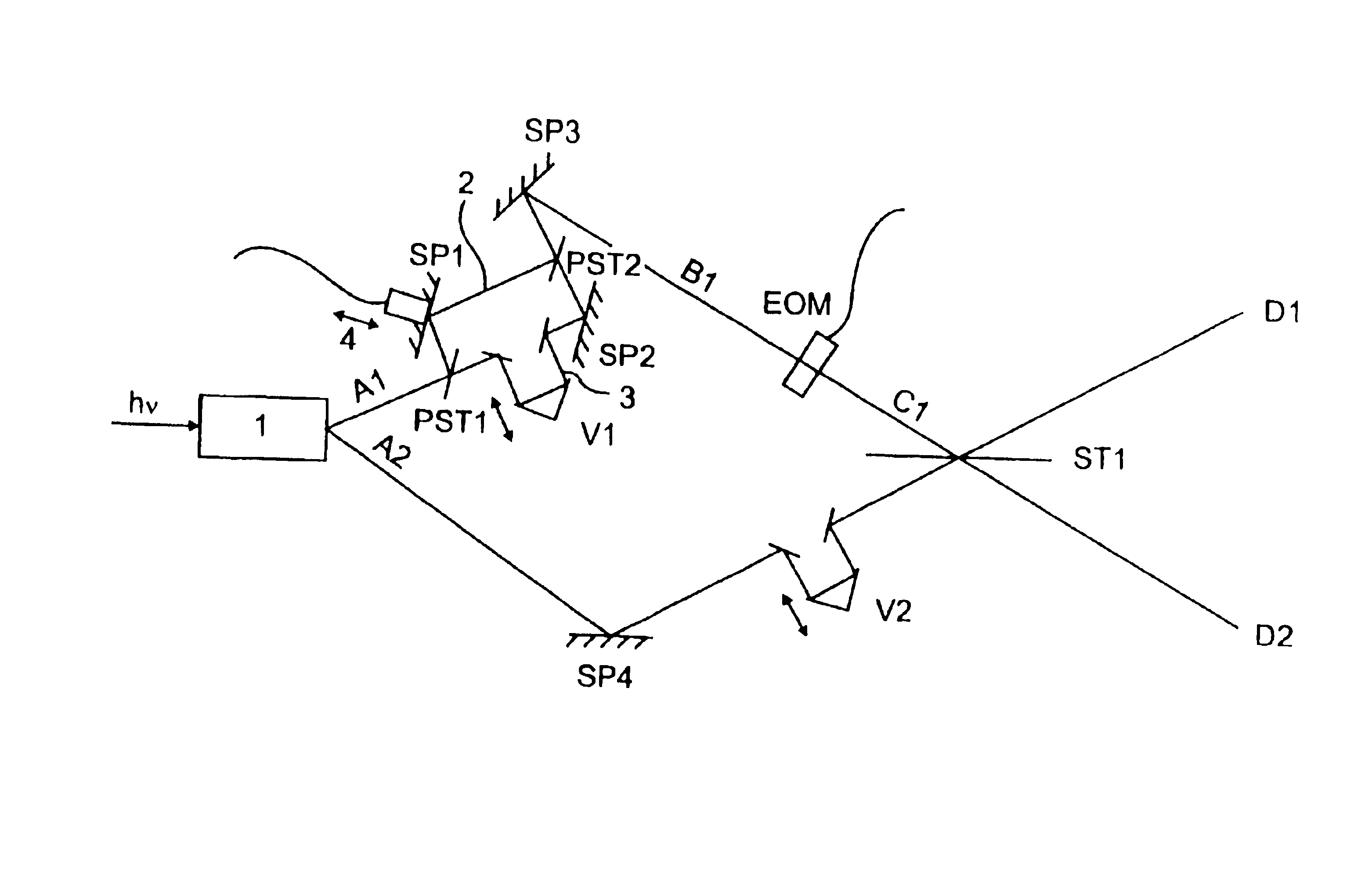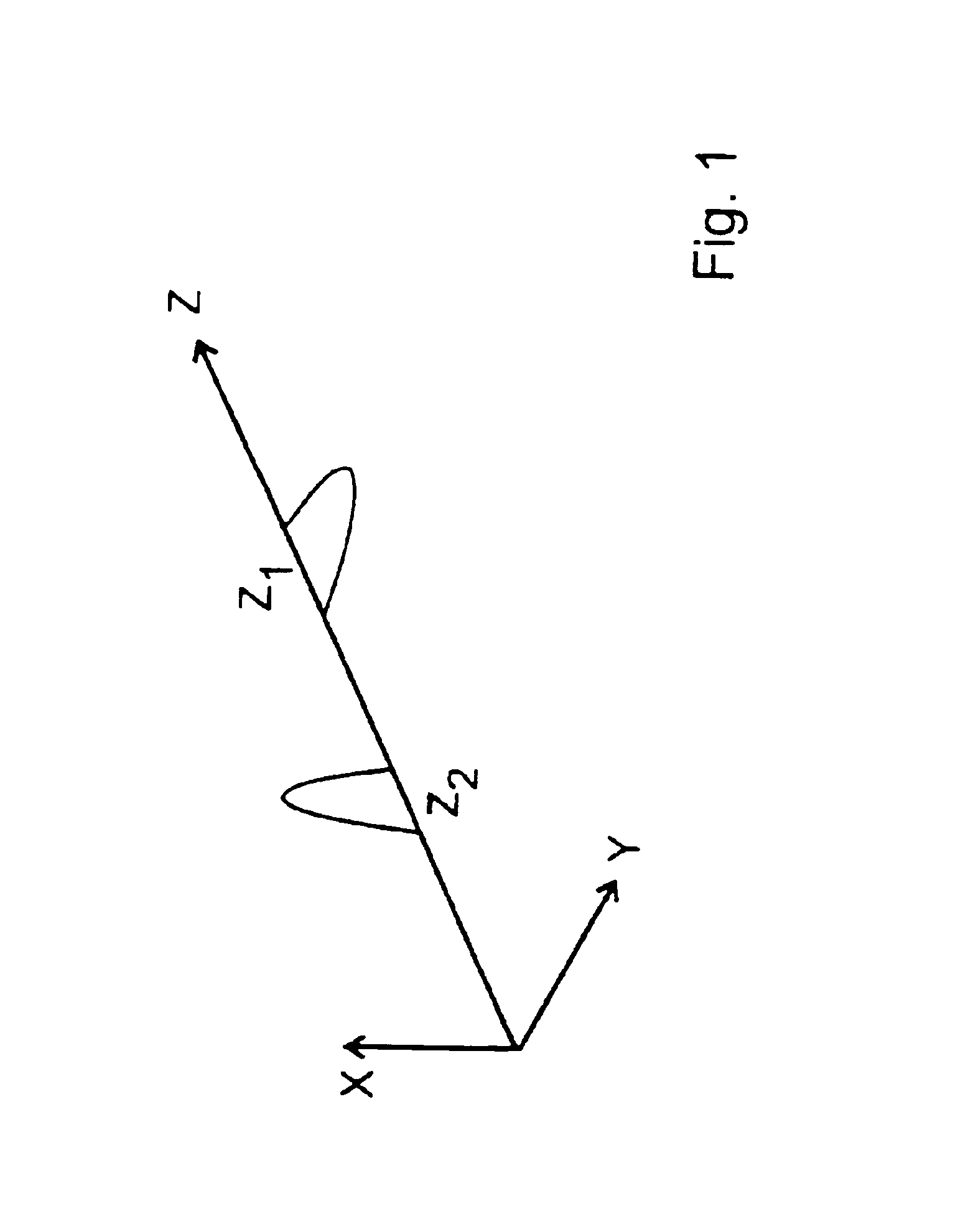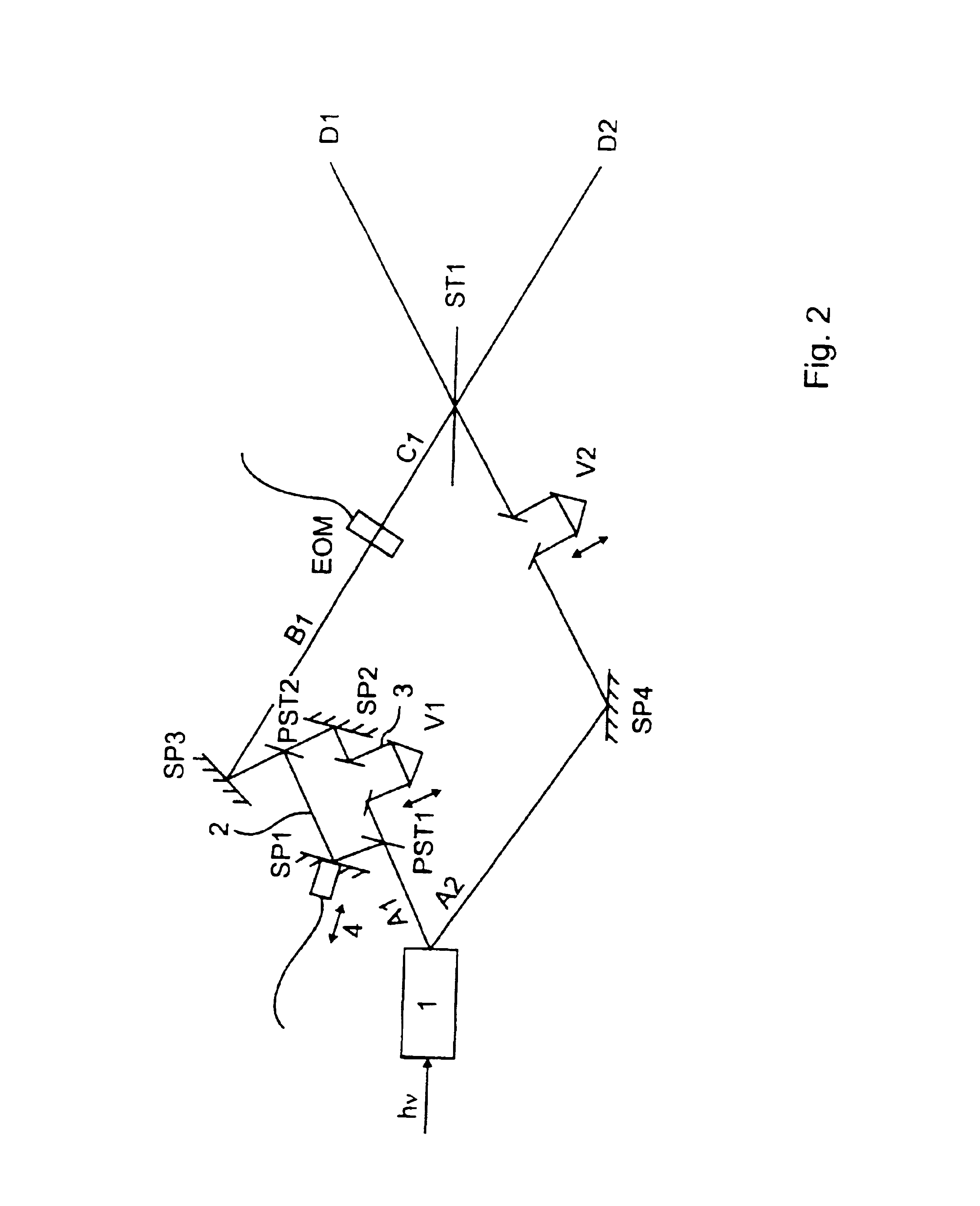Method for changing the polarization of at least one of the photons emitted from a photon-pair source into various partial paths of rays, and method for optionally generating individual photons or photon pairs in an optical channel
- Summary
- Abstract
- Description
- Claims
- Application Information
AI Technical Summary
Benefits of technology
Problems solved by technology
Method used
Image
Examples
Embodiment Construction
[0026]FIG. 1 schematically illustrates the spatial residence probability and polarization of a photon propagating along the z-axis, based on the example of two residence probability regions. In the region around Z1, it is linearly polarized in the y-direction; in the region around Z2, it is linearly polarized in the x-direction. Such a wave function or residence probability is achieved using a polarizing interferometer, which is oriented at less than 45° to the photon's starting polarization, so that both interferometer arms are passed through with equal probability. Here, the residence probabilities around Z1 and Z2 are separated by a region in which the residence probability is zero. The distance Z1-Z2 may be given by the optical path length difference in the interferometer arms. The greater the distance Z1-Z2 is, the more easily the two regions may be able to be separately influenced.
[0027]FIG. 2 illustrates a set-up for implementing the method for selectively changing the polari...
PUM
 Login to View More
Login to View More Abstract
Description
Claims
Application Information
 Login to View More
Login to View More - R&D
- Intellectual Property
- Life Sciences
- Materials
- Tech Scout
- Unparalleled Data Quality
- Higher Quality Content
- 60% Fewer Hallucinations
Browse by: Latest US Patents, China's latest patents, Technical Efficacy Thesaurus, Application Domain, Technology Topic, Popular Technical Reports.
© 2025 PatSnap. All rights reserved.Legal|Privacy policy|Modern Slavery Act Transparency Statement|Sitemap|About US| Contact US: help@patsnap.com



